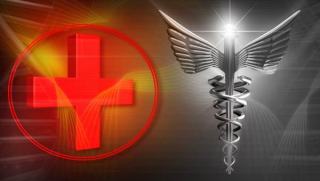Contraindications
RISK WARNINGS: MEDICAL ABORTION CONTRAINDICATIONS
 |
What Are The Risks?
Learn Who Should NOT Have Medical Abortion.
|
On This Page:
CONTRAINDICATIONS – Q & A
What should a patient know about medical abortion Contraindications?
CONTRAINDICATIONS describe any situation in which the drug should be used because the risk of use (e.g., certain potentially fatal adverse reactions clearly outweighs any possible therapeutic benefit and have a substantial risk of being harmed by the drug. (1)
A contraindication is a symptom or condition that makes a particular treatment or procedure inadvisable. (2)
Women must be evaluated clinically for potential contraindications to medical abortion, including ectopic pregnancy, severe anaemia, cervicitis or upper genital tract infection, presence of an intrauterine device, or any contraindication to use of the specific medication. (3)
Some women should not take mifepristone. (4) (See Contraindications – Mifepristone)
Do not take mifepristone if it has been more than 49 days since your last menstrual period. (4)
It is important for patients to understand the need for 2 follow-up visits with their health care provider and that they have access to a medical care facility in case of an emergency of incomplete abortion, blood transfusions, and emergency resuscitation during the period from the first visit until discharged by the administering physician. (4) (5)
Mifepristone has not been studied in women who are heavy smokers. Please tell your doctor if you smoke more than 10 cigarettes a day. (4)
A patient should tell the provider about all of their medical conditions and should clearly understand the benefits and risks of medical abortion. (6)
CONTRAINDICATIONS – MIFEPRISTONE
Who should not take Mifepristone for medical abortion? (5) (7)
Administration of Mifeprex (mifepristone) and misoprostol for the termination of pregnancy (the “treatment procedure”) is contraindicated in patients with any one of the following conditions.
Do NOT Take if:
- You have a confirmed or suspected ectopic pregnancy or undiagnosed adnexal mass (the treatment procedure will not be effective to terminate an ectopic pregnancy) (see WARNINGS).
- You have an IUD in place. It must be taken out before you take Mifeprex (see INDICATION AND USAGE).
- You have problems with your adrenal glands; (chronic adrenal failure).
- You take certain steroid medications for a long period of time; (concurrent long-term corticosteroid therapy).
- You are allergic to mifepristone, misoprostol, or medicines that contain misoprostol, such as Cytotec (U.S trade name for misoprostol) or Arthrotec (U.S. trade name for diclofenac sodium/misoprostol).
- You have bleeding problems or are taking anticoagulant (blood thinning) drug products; (hemorrhagic disorders or concurrent anticoagulant therapy).
- You have a group of disorders that affect the nervous system or skin, or both; (inherited porphyrias).
- You cannot return for the next 2 important follow-up health care visits with the provider.
Because it is important to have access to appropriate medical care if an emergency develops, the treatment procedure is contraindicated if a patient does not have adequate access to medical facilities equipped to provide:
- Emergency treatment of incomplete abortion
- Blood transfusions, and
- Emergency resuscitation during the period from the first visit until discharged by the administering physician.
Mifeprex (mifepristone) also should not be used by any patient who may be unable to understand the effects of the treatment procedure or to comply with its regimen.
Patients should be instructed to review the MEDICATION GUIDE and the PATIENT AGREEMENT provided with Mifeprex carefully and should be given a copy of the product label for their review.
Patients should discuss their understanding of these materials with their health care providers, and retain the MEDICATION GUIDE for later reference (see PRECAUTIONS).
For More Information:
Cytotec ® (misoprostol): Important Information for Consumers
What important risk information should a patient know about Misoprostol? (8)
Cytotec (misoprostol) can cause abortion (sometimes incomplete which can lead to dangerous bleeding and require hospitalization and surgery), premature birth, or birth defects.
Cytotec has been reported to cause the uterus to rupture (tear) when given after the eighth week of pregnancy. (See Boxed WARNINGS)
Rupture (tearing) of the uterus can result in severe bleeding, hysterectomy, and/or maternal or fetal death.
For More Information:
CONTRAINDICATIONS – MISOPROSTOL
Who should not take Misoprostol for medical abortion? (9)
See Boxed WARNINGS
Cytotec should not be taken by pregnant women to reduce the risk of ulcers induced by nonsteroidal anti-inflammatory drugs (NSAIDs).
Cytotec should not be taken by anyone with a history of allergy to prostaglandins.
For More Information:
1. U.S. Department of Health & Human Services. CFR – Code of Federal Regulations, Labeling, Title 21, Volume 4, 21CFR201.57. FDA, U.S Food and Drug Administration. [Online] April 1, 2010. [Cited: August 1, 2011.] http://www.accessdata.fda.gov/scripts/cdrh/cfdocs/cfcfr/CFRSearch.cfm?fr=201.57.
2. Merriam-Webster. Merriam-Webster's Medical Desk Dictionary, Revised Edition. Springfield, Massachusetts : Merriam-Webster, Incorporated, 2005.
3. Grossman, D. Medical methods for first trimester abortion: RHL practical aspects. The WHO Reproductive Health Library; Geneva: World Health Organization. [Online] September 3, 2004. [Cited: July 28, 2011.] http://apps.who.int/rhl/fertility/abortion/dgguide/en/index.html.
4. U.S. Department of Health & Human Services. Drugs, Mifeprex Questions and Answers, 2/24/2010. FDA, U.S. Food and Drug Administration. [Online] February 24, 2010. [Cited: July 16, 2011.] http://www.fda.gov/Drugs/DrugSafety/PostmarketDrugSafetyInformationforPatientsandProviders/ucm111328.htm.
5. U.S.Department of Health & Human Services. Drugs@FDA, Label and Approval History, Mifepristone Labeling Revision. FDA, U.S. Food and Drug Administration. [Online] April 27, 2009. [Cited: July 16, 2011.] http://www.accessdata.fda.gov/drugsatfda_docs/label/2009/020687s015lbl.pdf.
6. U.S. Department of Health & Human Services. Drugs, Labeling and Regulatory History from Drugs@FDA, Mifeprex (mifepristone) Medication Guide, Rev 3: 4/22/09. FDA, U.S. Food and Drug Administration. [Online] July 19, 2011. [Cited: July 20, 2011.] http://www.fda.gov/downloads/Drugs/DrugSafety/UCM088643.pdf.
7. Danco Laboratories, LLC. Health Professionals, Prescribing Information. Mifeprex, (Mifepristone) the early option pill to end pregnancy. [Online] 2011. [Cited: July 28, 2011.] http://www.earlyoptionpill.com/section/health_professionals/prescribing_information/.
8. Pfizer. Cytotec (misoprostol tablets), Information for Consumers, Cytotec U.S. Patient Product Information, Revised March 2002. Pfizer. [Online] March 2002. [Cited: July 28, 2011.] http://www.pfizer.com/files/products/ppi_cytotec.pdf.
9. U.S. Department of Health & Human Services. Drugs@FDA, Cytotec (misoprostol) Label and Approval History. FDA, U.S. Food and Drug Administration. [Online] September 11, 2009. [Cited: July 12, 2011.] http://www.accessdata.fda.gov/drugsatfda_docs/label/2009/019268s041lbl.pdf.
Page Last Updated: 8/30/2011



Comments on this entry are closed.